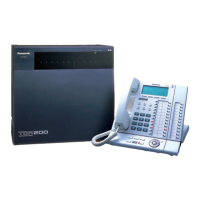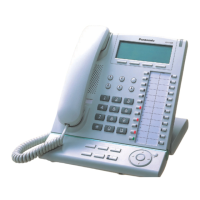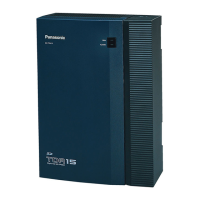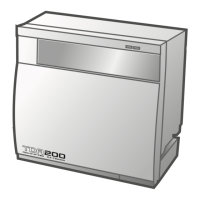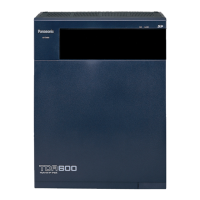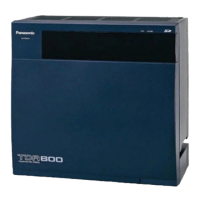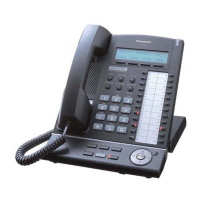1.27 Networking Features
214 Feature Guide
[Example of Bypassing TIE-to-CO Line Call Restrictions]
Explanation:
1. Extension 1001 dials a DISA floating extension number of PBX-2.
2. The DISA feature answers the call. From this point, if the COS assigned to the caller's
extension or verified code allows, the caller can use Walking COS or Verified Code Entry
to bypass the restrictions and make a CO line call.
d) TIE Line Call Routed to CO Line via FWD/Intercept Routing/Call Transfer
A TIE line call can be redirected to an outside party via FWD, Intercept Routing, or Call
Transfer.
[Example]
Explanation:
PBX-1 makes a call.
Extension 1001 of PBX-1 dials "2001".
1. PBX-1 checks its Extension Numbering Plan. "2001" is not one of its extensions.
2. PBX-1 checks its Other PBX Extension list, and finds an extension "2001".
3. PBX-1 checks its TIE Line Routing and Modification Table (not shown here). Finds
leading number "2". No modification is programmed.
4. Sends the call down the TIE line.
PBX-2 receives the call.
1. PBX-2 checks its Incoming Number Modification Table (not shown here). No modification
is programmed. The number is still "2001".
Dials a DISA floating
extension number of PBX-2
Outside Party
CO Line Grp. 1
(COS: 3)
CO Line
Grp. 3
Private Network
Extn. 1001
Telephone
Company
PBX-2PBX-1
DISA
Outside Party
1-212-555-1234
CO Line
Private Network
Extn. 1001 Extn. 2001
Telephone
Company
Dials "2001"
Extension
Numbering Plans
PBX-1: 1000-1999
PBX-2: 2000-2999
PBX-2PBX-1

